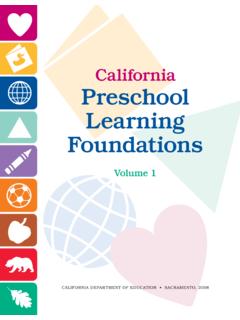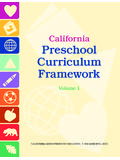Transcription of STRUCTURAL POLICY COUNTRY NOTES Thailand - …
1 STRUCTURAL POLICY . COUNTRY NOTES . Thailand This COUNTRY Note is an extract from the Economic Outlook for Southeast Asia, China and India 2014: Beyond the Middle-Income Trap, STRUCTURAL POLICY COUNTRY NOTES for emerging asia Thailand GDP growth rates (Percentage change). A. Medium-term economic outlook 2000-07 (average) 2014-18 (average). (Forecast, 2014-18 average) 10. GDP growth (percentage change): Current account balance (% of GDP): 8. Fiscal balance: 6. 4. B. Medium-term plan 2. Period: 2012-16. Theme: A happy society of equity, fairness and resilience 0. the vision of the Philosophy of a Sufficiency Economy Thailand Emerging Asia ASEAN-10. average average Source: OECD Development Centre, MPF-2014. C. Basic data (in 2012). Total population: 64 million* GDP per capita (PPP, current USD). Population of Bangkok million (in 2010). GDP per capita at PPP: 10 125 (current USD)** Thailand ASEAN-10 average Note: * Total population data for 2012 are estimates.
2 Emerging Asia ** IMF estimate average Sources: OECD Development Centre, national sources and IMF. OECD average 0 10 000 20 000 30 000 40 000. Source: IMF. Composition of exports, 2012 Composition of imports, 2012. Percentage of total exports Percentage of total imports Others 33% Machinery/ Others Machinery/. electrical 24% electrical 29% 30%. Transportation 7%. Plastics/ Chemicals and rubber allied industries Stone/glass 13% Mineral 6% 7%. products Mineral products Transportation Metals 20%. 7% 12% 12%. Source: Trademap. Source: Trademap. Philosophy of Sufficiency Economy a happy society that is equitable, fair and resilient Thailand will need to address several medium-term challenges identified in its 2012-16 Eleventh National Economic and Social Development Plan (NESDP) before it can achieve its vision of becoming an economy that is balanced, stable and sustainable. Although the COUNTRY has carried out some reforms in the two years since the plan was initiated, it needs to do more specifically to upgrade educational quality, strengthen the agriculture sector, and restructure the economy with an emphasis on green growth.
3 2 ECONOMIC OUTLOOK FOR SOUTHEAST ASIA, CHINA AND INDIA 2014: BEYOND THE MIDDLE-INCOME TRAP OECD 2013. STRUCTURAL POLICY COUNTRY NOTES for emerging asia In education, there needs to be a co-ordinated effort to elevate the quality of learning and teaching if outcomes are to be improved. As for agriculture, meeting the challenge of greater productivity and income and employment security requires further efforts to modernise and to educate farmers in the use of technology. As regards green growth, Thailand can make its national strategy more effective by strengthening institutional co-ordination and raising levels of public awareness of the benefits of a green lifestyle. Thailand 's medium-term POLICY challenges and responses Upgrade human capital by improving the national curriculum and teaching standards Improve agricultural productivity through modernisation and education Improve institutional co-ordination to achieve green growth POLICY FOCUS.
4 Upgrade human capital by improving the national curriculum and teaching standards Thailand 's educational system has seen a significant increase in access and enrolment levels at primary, secondary, and tertiary levels. Yet overall learning outcomes have remained stationary and even deteriorated over time a trend reflected in Thai students' poor showings in national and international tests. In 2009, their scores in the mathematics and science tests of the Programme for International Student Assessment (PISA) were either similar or only marginally better than in previous assessments. Thailand lags behind other Asian countries, with the exception of Indonesia, and lies well below the OECD average in PISA performance levels (see Figure ). ECONOMIC OUTLOOK FOR SOUTHEAST ASIA, CHINA AND INDIA 2014: BEYOND THE MIDDLE-INCOME TRAP OECD 2013 3. STRUCTURAL POLICY COUNTRY NOTES for emerging asia Figure PISA scores in mathematics and science in Thailand and other selected economies Mean score 2003 2006 2009.
5 600. Mathematics 550. 500. 450. 400. 350. Indonesia Thailand Macao, Japan Korea Hong Kong, Chinese OECD. China China Taipei average 2006 2009. 600. Science 550. 500. 450. 400. 350. Indonesia Thailand Macao, Korea Japan Chinese Hong Kong, OECD. China Taipei China average Note: PISA scale was set such that approximately two-thirds of students across OECD countries score between 400 and 600 points. Gaps of 72, 62 and 75 points in reading, mathematics and science scores, respectively, are equivalent to one proficiency level. Source: OECD (2011b), PISA 2009 Results: Learning Trends: Changes in Student Performance since 2000. (Volume 5), OECD Publishing, Paris. 12 The Thai educational paradox Thailand 's educational outcomes are relatively weak even though the percentage of the national budget devoted to education is consistently higher (20% in 2009) than in other countries that belong to the Association of Southeast Asian Nations (ASEAN).
6 Indeed, some analysts speak of the Thai educational paradox (see Figure ). The paradox shows that merely increasing financial resources cannot in itself raise standards of education, particularly when expenditure focuses on expanding education quantitatively building infrastructure (Fry and Bi, 2013). 4 ECONOMIC OUTLOOK FOR SOUTHEAST ASIA, CHINA AND INDIA 2014: BEYOND THE MIDDLE-INCOME TRAP OECD 2013. STRUCTURAL POLICY COUNTRY NOTES for emerging asia Figure Efficiency of the education sector in Thailand PISA score and other selected economies, 2009. 600. Hong Kong, China 550. Singapore Japan OECD average 500. 450. Thailand 400. Indonesia 350. 8 10 12 14 16 18 20 22 24 26. Public expenditure on education (as % of total public expenditure). Source: OECD Pisa database and national sources. 12 Revamp national curriculum and performance assessment system to raise academic standards A closer look at Thailand 's weak educational outcomes reveals an inward-looking curriculum that emphasises rote learning.
7 The current national curriculum has been described as hierarchical, top-down, with a systematic lack of critical thinking that does not prepare students for work in the 21st century (Ahuja, 2011). What is needed is a revamped curriculum that provides for project-based learning, teamwork and the use of information technology (IT) resources for e-learning purposes, while affording teachers some flexibility in the classroom. While current Prime Minister Yingluck Shinawatra's one tablet per child pledge is a step in the right direction of encouraging information and communication technology (ICT) in the classroom, it should be complemented with a change in curriculum that puts the focus of learning on student needs in the present global environment. Changes to the curriculum should be supported by a performance assessment system that effectively measures students' academic abilities and is aligned with international standards.
8 Thailand 's existing system has often been described as lacking in credibility. At present, students are assessed through two sets of standardised national tests administered by the National Institute of Educational Testing Services (NIETS): the Ordinary National Education Tests (O-Net) at grades 6 and 9, and the Advanced National Education Test (A-Net) at grade 12. Although passing O-Net and A-Net is a requirement for university admission, it is reported that average scores are inconsistent and have declined over time. Many educators and independent researchers have called for O-Net and A-Net to be replaced by standardised tests that take international standards of academic performance as their benchmarks. Such tests could further serve to hold teachers and schools accountable for their students' performance, especially if schools'. average test scores were released publicly. ECONOMIC OUTLOOK FOR SOUTHEAST ASIA, CHINA AND INDIA 2014: BEYOND THE MIDDLE-INCOME TRAP OECD 2013 5.
9 STRUCTURAL POLICY COUNTRY NOTES for emerging asia Improve teaching standards Another decisive factor in educational outcomes is the standard of teaching. A large and growing body of research convincingly shows that the quality of teachers is the single most important schooling-related factor in student achievement (OECD, 2009c). In Thailand , improving the quality of teachers and learners and making the school management system more efficient were among the recommendations of the 2008. Commission on Second Decade of Educational Reform. Consequently, teachers became the focus of educational reform under former Prime Minister Abhisit Vejjajiva's government, which sought to raise pay and respect for the profession. To that end, the government introduced two schemes: In 2009 it approved a project known as Khru Pan Mai ( New Breed of Teachers ). The project sought to create 300 000 positions for a new breed of teachers who would have high qualifications, knowledge and versatility.
10 They would replace retiring teachers and help raise the profile of the teaching profession. In 2004 the government introduced a new salary scheme that not only doubled the minimum salary at each teaching level (with the exception of the first level), it also provided bonuses for teachers whose students achieved good results (Table ). Consequently, teachers' pay especially in the public sector has increased over time (Figure ). Table Comparison of old and new salary schemes in Thailand Old scheme New scheme (2004). (prior to 2004). Level Salary (THB) Level Salary (THB) Extra allowance Teacher 1 4 230 ~ 13 550 Assistant teacher 8 360 (USD 246). (USD 124 ~ 399). Teacher 2 5 050 ~ 16 650 Teacher 11 470 ~ 26 440. (USD 149 ~ 490) (USD 337 ~ 778). Instructor 1 6 210 ~ 20 340 Experienced teacher 14 810 ~ 32 250 3 500. (USD 183 ~ 598) (USD 436 ~ 949) (USD 103). Instructor 2 9 320 ~ 25 180 Highly experienced teacher 18 180 ~ 45 620 5 600.












